
Thomas W
-
Posts
788 -
Joined
-
Last visited
-
Days Won
3
Content Type
Profiles
Forums
Blogs
Gallery
Events
Store
Posts posted by Thomas W
-
-
Today some flamethrower and other photos were sold by a seller on ebay. Robin posted one of his photos in #219. Next photo was in another auction of this seller. Because the skull I wonder, had the photo a relation to the Flammenwerfer?
I would say "Yes." That looks very similar to chalkboard signs made by the Garde-Reserve-Pionier-Regiment, such as this one made by men of the 7th Company. I wish I'd seen your card, Sergeant08!
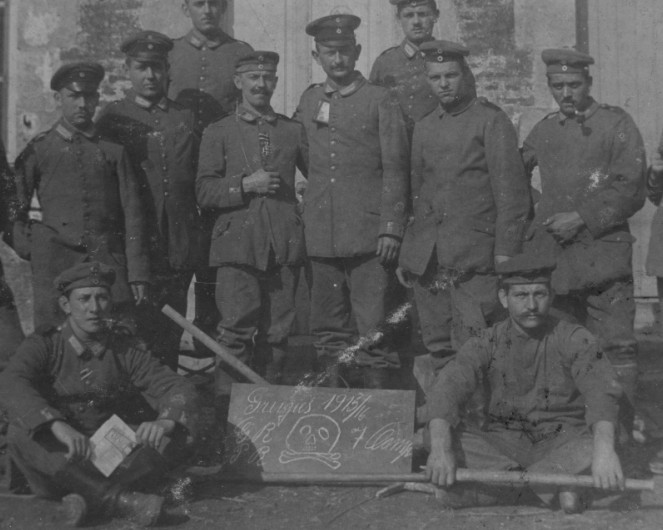 0
0 -
And, best of all, a unit stamp!
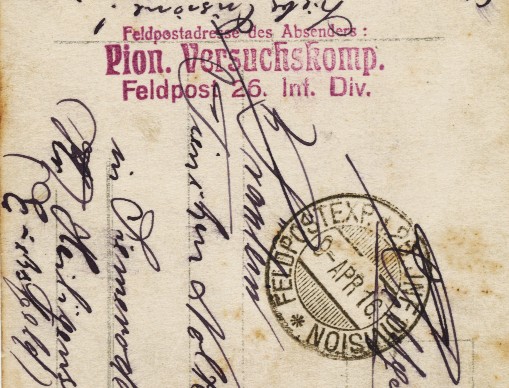 0
0 -
Here is the elusive "V" on the shoulder strap:
 0
0 -
Unbelievably rare photo I got on eBay--and I was the only bidder! Weird, but I'm very grateful. The Pionier-Versuchskompagnie was the de facto 5th Company of the Garde-Pionier-Bataillon. It tested and perfected new weapons, including flamethrowers from 1907-1912. Although the unit's records were destroyed in World War II, I heard from the grandson of a former member that the company fought high-risk, clandestine combat missions during the war, being the first to try new weapons. Looking at these guys, I can believe it. They look like pretty tough customers. They also have posies in their button holes, indicating they're about to leave for the front.
 0
0 -
And here's a Freikorps man with two different styles of Totenkopf badges: one on the left sleeve, and one on the cap.
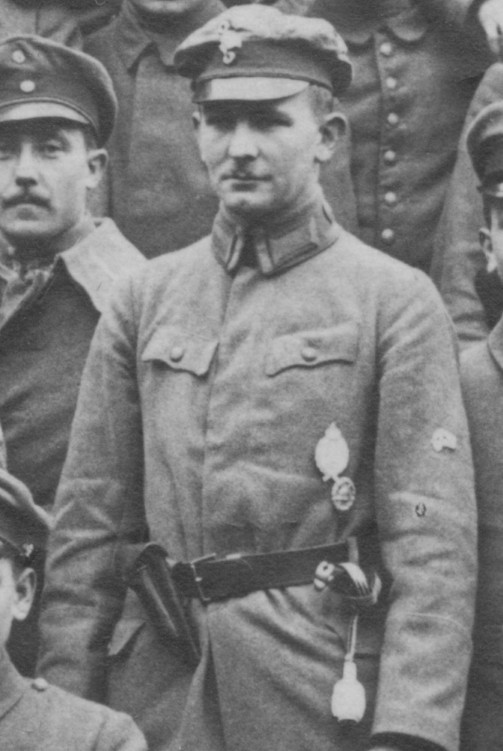 0
0 -
Robin, here's a flamethrower pioneer of Sturmbataillon Nr. 5 (Rohr) with an unusually dark Totenkopf badge.
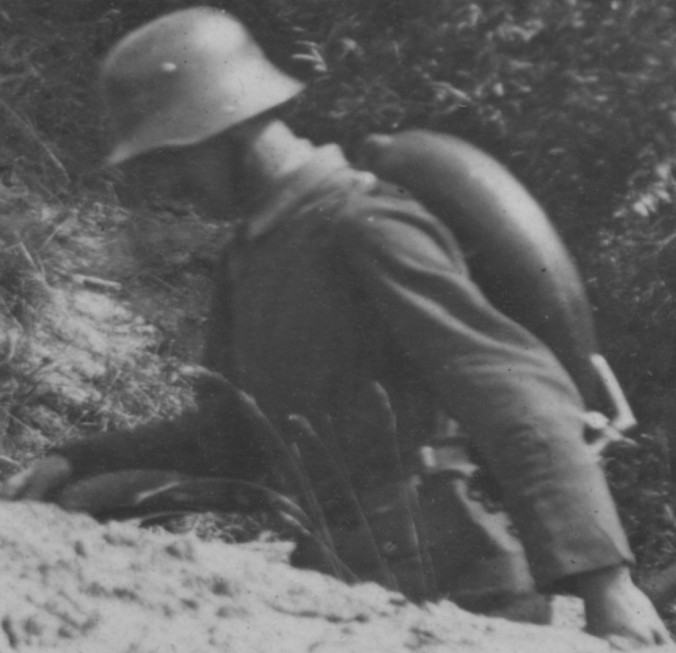 0
0 -
Thomas,
There were several types of orders for setting regulations. What they were called, depended on where they were emanating from. There were Vfg., Erlaß, KMs, AKOs, etc.
Chip
So, in the case of the alleged Rohr Pickelhaube, the issuing authority would have been...?
0 -
"Schulterstück Oberstleutnant, feldgraue Litze, Flammenwerfer, Modell 1916, versilberter Totenkopf aufgelegt, sehr selten."
http://www.militaria...nant-M1916-D533
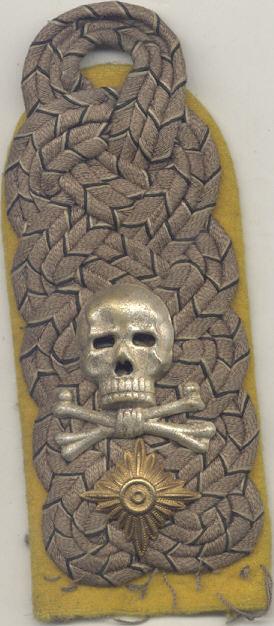 0
0 -
Thanks, Chip. I appreciate it. So, who would've issued the order, if it wasn't an AKO? Who else had the authority to set regulations for uniform details?
0 -
Can anybody PM me the information from page 499, Volume 1, of Jürgen Kraus, Die feldgraue Uniformierung des deutschen Heeres 1901-1918 (Osnabrück: Verlag Biblio, 1999)? I'm about to get the galleys of my next flamethrower book, and I need to correct the text if the Rohr Pickelhaube wasn't auhorized by an AKO on 6. 6. 1916. I need to verify that it was authorized by a Vfg. and not an AKO, and I need the info pretty quickly.
Thanks.
0 -
Chip, you may be correct. I was going by notes on my computer. I have the photocopied pages somewhere, but I can't find them. Would it be possible for you to scan and post the sentence that says it's a Vfg?
0 -
Chip and Sergeant08, according to Jürgen Kraus, Die feldgraue Uniformierung des deutschen Heeres 1901-1918 Volume II (Osnabrück: Verlag Biblio, 1999), p. 499, it was an AKO of June 6, 1916, that authorized a silver Brunswick-style Totenkopf for the Garde-Pionier Pickelhaube worn by the flamethrower platoon of Sturmbataillon Rohr.
It's clear that the flamethrower platoon of Sturmbataillon Rohr had its own uniform regulations. The men wore Garde-Pionier uniform, but with a red number "5" on the shoulder strap. They wore the Totenkopf sleeve badge, but at the elbow rather than on or above the cuff.
As for the unit itself, the flamethrower operators were recruited from the II. Garde-Pionier-Ersatz-Bataillon, and after service with Rohr they transferred into the Garde-Reserve-Pionier-Regiment. However, the reverse wasn't true. Men did not transfer from the Garde-Reserve-Pionier-Regiment into Rohr's unit.
I think Rohr was a favorite of Crown Prince Wilhelm and the Kaiser, so he was given lots of privileges that other unit commanders didn't get.
0 -
Interesting, Sergeant08!
I grabbed this from eBay a while ago. The seller claimed it was from Minenweferkompagnie Nr. 16, dated 1916. As far as I know the Minenwerferkompagnien wore Pionier uniform, right? Which means their helmets had fittings in white metal ("pioneer silver") instead of brass.
At any rate, note the Totenkopf on the eagle.
 0
0 -
You can definitely see that the uniforms in the studio photos are Dunkelblau, when you see the second shot. The contrast is better. It appears to me that the patches were just loosely applied for the photos, as the shadows indicate that neither was sewn down around the edges. I would not have thought that this gray patch was authorized for wear on the old uniform. At least, I have never heard of any regulations. Do you know any more about this Thomas?
Another thing I was wondering about is that Klietmann discussed a "Flammenwerfer Pickelhaube" with a skull and bones on the Gardestern. Neither of these photos exhibit this. According to Kraus, the Pickelhaube skull was authorized in June 1916, one month before the sleeve patch.
Chip
I think you're right about the patch being loosely attached to the Dunkelblau. I have another photo by the same photographer, Otto Hoeffke, which shows a flamethrower pioneer wearing the Friedensrock in 1918. The badge is a variation I've seen in at least four other photos, so that indicates to me that it was an official version. I haven't been able to figure out its significance. I have a photo that will appear in my next flamethrower book (I'm getting the galleys soon! Yippee!) that shows a Saxon infantryman wearing the white variation in the Rohr position. Therefore the white variation MAY have been awarded to infantrymen rather than pioneers. That's just a guess.
But in my Hoeffke photo, you can clearly see that the badge is loosely attached to the sleeve of the Friedensrock by two straight pins on either side. It's entirely possible that the badge was attached that way to the Dunkelblau as well.
The Rohr Pickelhaube was authorized by an AKO dated June 6, 1916. So far I haven't been able to find the AKO number. I've also not seen a period photo of the helmet. Daniel Griffin allowed me to use photos of his helmet in both my books. I think I shouldn't post the photos here without his permission, and I'm not in contact with him anymore.
Some people--like Tony Schnurr of the Kaiser's Bunker Web site--think the Rohr Pickelhaube probably didn't exist. I'm willing to present it as fact, based on the information I have, but of course Tony may be right.
 0
0 -
If it (were) a male name, is that level of intimacy common for German men of the period?
The answer is "Yes"
That may explain this photo of flamethrower pioneers at Riga, photographed November 27, 1917. Look at the right hand of the man sitting second from the left. To my modern eyes, that seems like an unusually intimate place to touch your comrade. I can safely say I've never touched the inner thigh of any male friend!
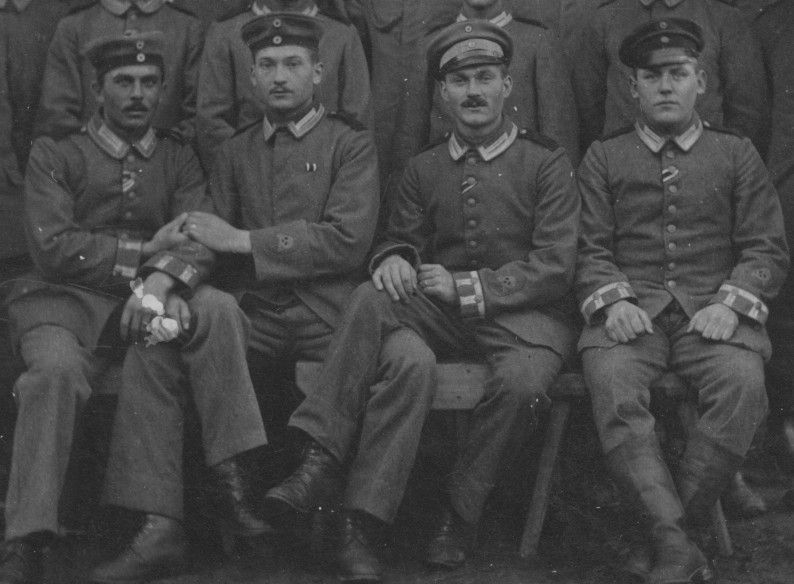 0
0 -
Thanks, Naxos! That makes much more sense.
0 -
You're quite welcome, Naxos.
"My dear Haynrodern to the memory of your Ernst."
Is Haynrodern a male or female name? If it's a male name, is that level of intimacy common for German men of the period?
0 -
Hi, Sergeant08! Thanks for posting that photo! Yes, it's mine.
I have to leave to go shopping right now, but would you like the Wehrwolf photo I have? Maybe we can make a trade for something.
Send me a private message if you are interested.
0 -
Chip, I think that's the Dunkelblau. I have several photos of flamethrower pioneers taken by the same photographer, Otto Hoeffke, using the same silver vase as a prop.
This kid was a flamethrower pioneer of Sturmbataillon Nr. 5 (Rohr). He's got the sleeve badge on his Dunkelblau.
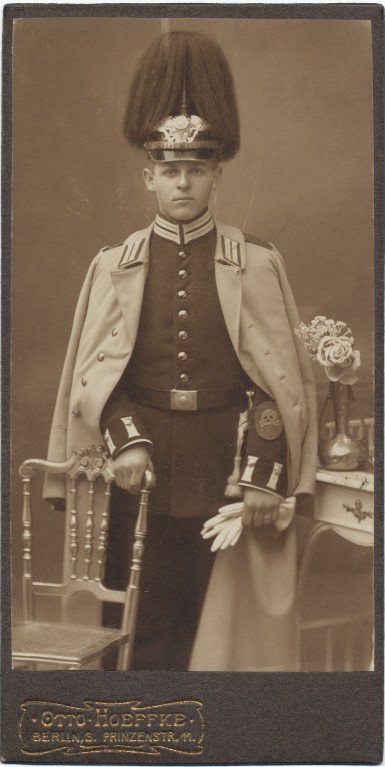 0
0 -
Very nice, Sergeant08. Are you a collector?
By the way, here's a sad story to make you cry. I bought this card on eBay, and it was lost even though it was sent from Germany by registered airmail. It arrived in New York on July 29 and disappeared. Nobody can explain what happened to it. I can't think about it too much, because it makes me want to pull out all my hair. Oh, well. My advice to everyone: DON'T USE THE POSTAL SERVICE. ALWAYS USE FEDEX, DHL, OR UPS.
 0
0 -
Thanks for the information! I didn't know that. There's no date on the photo. Here's the writing on the back:
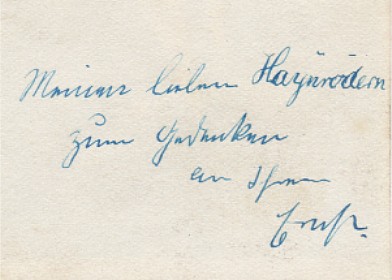 0
0 -
And here's the same man as in the last photo, this time photographed at Stenay on August 18, 1916. This is a very unusual image of flamethrower pioneers, because both are posing with their hands behind their backs. They were awarded the Totenkopf badges on July 28, 1916, so they may not have received them yet. As Robin noted before, flamethrower pioneers went through some very amusing contortions to display their sleeve badges to the photographer. The fellow on the left is a former member of the Fliegertruppen, who transferred into the flamethrower regiment in 1916.
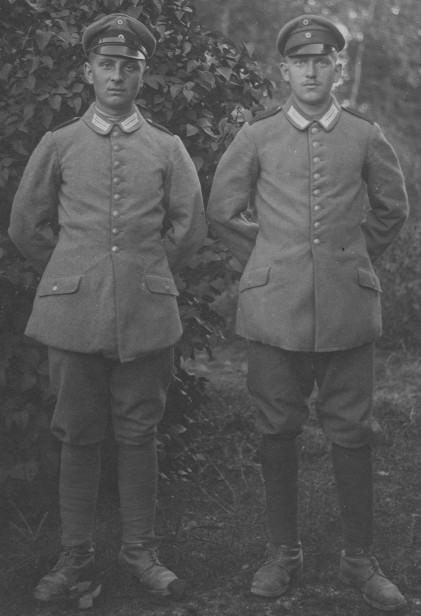 0
0 -
And two more from my collection:
Garde-Reserve-Pionier-Regiment at Stenay after July of 1916. Note the fellow on the right:
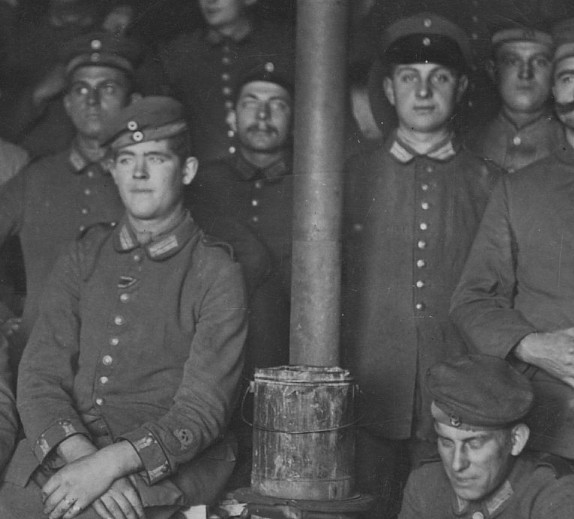 0
0 -
From my collection:
A Wehrwolf! Eeeeek! Where are my silver bullets?!
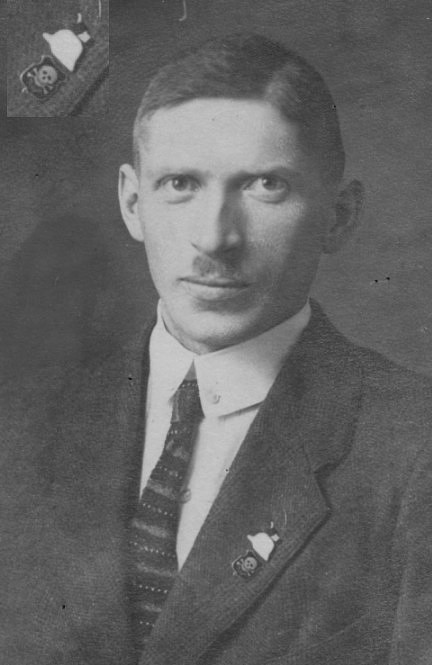 0
0


Pionier-Versuchskompagnie photo
in Germany: Imperial Uniforms, Headwear, Insignia & Personal Equipment
Posted · Edited by Thomas W
Very rare photo of the Pionier-Versuchskompagnie operating one of Richard Fiedler's first flamethrowers in 1908. It was a large device with the lance mounted on a tripod. This image is from a Russian history of flamethrowers, published in the 1930's.